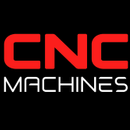Primary Industries in American Manufacturing: A Comprehensive Overview

Primary Industries in American Manufacturing: A Comprehensive Overview
American manufacturing is a diverse and robust sector that encompasses a wide range of industries. These industries are categorized into main and subcategories, each contributing significantly to the national economy in terms of size, revenue, and employment. This article breaks down the primary industries, their statistics, top companies, and supply chain structures, and includes a case study projecting the evolution of American manufacturing over the next decade.
Main Categories and Subcategories
1. Automotive Industry
- Main Category: Vehicle Manufacturing
- Subcategories: Passenger cars, light trucks, heavy trucks, automotive parts, and accessories.
2. Aerospace and Defense
- Main Category: Aircraft and Defense Manufacturing
- Subcategories: Commercial aircraft, military aircraft, spacecraft, defense systems, and components.
3. Chemical Industry
- Main Category: Chemical Manufacturing
- Subcategories: Basic chemicals, specialty chemicals, consumer chemicals, pharmaceuticals, and petrochemicals.
4. Electronics and Electrical Equipment
- Main Category: Electronics Manufacturing
- Subcategories: Semiconductors, consumer electronics, industrial electronics, electrical equipment, and telecommunications equipment.
5. Machinery and Equipment
- Main Category: Machinery Manufacturing
- Subcategories: Industrial machinery, CNC machines, construction equipment, agricultural machinery, and mining equipment.
6. Food and Beverage
- Main Category: Food Manufacturing
- Subcategories: Processed foods, beverages, dairy products, meat and poultry, and packaged foods.
7. Metals and Mining
- Main Category: Metals Manufacturing
- Subcategories: Steel production, aluminum production, non-ferrous metal production, and metal fabrication.
8. Textiles and Apparel
- Main Category: Textile Manufacturing
- Subcategories: Yarn, fabric, apparel, and home textiles.
9. Medical Devices and Pharmaceuticals
- Main Category: Medical Manufacturing
- Subcategories: Medical devices, pharmaceuticals, biotechnology, and diagnostics.
Size, Revenue, and Employment Statistics
Automotive Industry: Generates approximately $500 billion annually and employs around 900,000 workers.
Aerospace and Defense: Generates about $300 billion annually with 500,000 employees.
Chemical Industry: Generates roughly $800 billion annually and employs about 800,000 people.
Electronics and Electrical Equipment: Generates around $400 billion annually with 600,000 employees.
Machinery and Equipment: Generates approximately $300 billion annually and employs 1 million workers.
Food and Beverage: Generates about $1.4 trillion annually and employs 1.5 million people.
Metals and Mining: Generates roughly $300 billion annually with 400,000 employees.
Textiles and Apparel: Generates around $75 billion annually and employs 300,000 workers.
Medical Devices and Pharmaceuticals: Generates approximately $500 billion annually with 600,000 employees.
Top USA Companies and Their Supply Chain Structures
1. Automotive Industry
- Top Companies: General Motors, Ford, Tesla
- Supply Chain Structure: Includes raw material suppliers, component manufacturers, assembly plants, and distribution networks.
2. Aerospace and Defense
- Top Companies: Boeing, Lockheed Martin, Northrop Grumman
- Supply Chain Structure: Comprises material suppliers, parts manufacturers, assembly lines, and maintenance services.
3. Chemical Industry
- Top Companies: Dow Chemical, DuPont, ExxonMobil Chemical
- Supply Chain Structure: Includes raw material suppliers, chemical processing plants, distribution centers, and retail outlets.
4. Electronics and Electrical Equipment
- Top Companies: Intel, Apple, General Electric
- Supply Chain Structure: Consists of raw material suppliers, component manufacturers, assembly plants, and distribution networks.
5. Machinery and Equipment
- Top Companies: Caterpillar, John Deere, General Electric
- Supply Chain Structure: Includes raw material suppliers, parts manufacturers, assembly plants, and distribution channels.
6. Food and Beverage
- Top Companies: Nestlé USA, PepsiCo, Tyson Foods
- Supply Chain Structure: Comprises agricultural suppliers, food processing plants, packaging facilities, and distribution networks.
7. Metals and Mining
- Top Companies: Nucor, Alcoa, U.S. Steel
- Supply Chain Structure: Includes mining operations, raw material processing, metal production, and distribution channels.
8. Textiles and Apparel
- Top Companies: Hanesbrands, VF Corporation, Levi Strauss & Co.
- Supply Chain Structure: Consists of raw material suppliers, textile mills, apparel manufacturing plants, and retail distribution.
9. Medical Devices and Pharmaceuticals
- Top Companies: Johnson & Johnson, Pfizer, Medtronic
- Supply Chain Structure: Includes raw material suppliers, manufacturing facilities, distribution centers, and healthcare providers.
Evolution of American Manufacturing
Historical Context
- Pre-Industrial Revolution: Small-scale, artisanal production.
- Industrial Revolution: Mass production techniques, assembly lines.
- Post-World War II: Expansion of manufacturing capabilities, rise of automation.
- Late 20th Century: Shift towards high-tech manufacturing, globalization of supply chains.
Current Trends (Up to 2024)
- Automation and Robotics: Increasing use of robots and automated systems.
- Digital Transformation: Adoption of Industry 4.0 technologies.
- Sustainability: Focus on eco-friendly manufacturing practices.
- Reshoring: Movement towards bringing manufacturing back to the U.S.
Case Study: Projections and Evolution Over the Next Ten Years (2034)
Company Profile: Advanced Manufacturing Inc. (AMI)
Current Status (2024)
- Industry: Electronics and Electrical Equipment
- Revenue: $2 billion
- Employees: 5,000
- Technologies: IoT, AI, robotics
Projections for 2034
- Revenue: Expected to reach $4 billion due to increased demand for smart devices.
- Employees: Workforce reduced to 3,500 due to automation.
- Technologies: Full integration of AI, machine learning, and digital twins for predictive maintenance and real-time monitoring.
- Sustainability: Implementation of closed-loop recycling systems and carbon-neutral manufacturing processes.
Evolution
- 2024-2029: Continued investment in automation and digital technologies. Gradual reduction in workforce as machines take over repetitive tasks.
- 2030-2034: Full realization of Industry 4.0. Enhanced use of data analytics for decision-making. Greater emphasis on sustainability and energy efficiency.
Impact
- Productivity: Doubling of output with reduced human intervention.
- Quality: Near-zero defects due to real-time monitoring and predictive maintenance.
- Sustainability: Significant reduction in carbon footprint and waste.
American manufacturing is poised for significant growth and transformation over the next decade. By leveraging advanced technologies and embracing sustainable practices, the industry can enhance productivity, reduce costs, and maintain its competitive edge. The future of manufacturing lies in the seamless integration of digital and physical systems, enabling a more efficient, resilient, and environmentally friendly industrial landscape.
References
- The Future of Manufacturing, McKinsey & Company, 2023.
- U.S. Manufacturing Statistics, National Association of Manufacturers, 2024.
- Industry 4.0: The Fourth Industrial Revolution, Deloitte Insights, 2022.
- Top Manufacturing Companies in the USA, ThomasNet, 2023.
- American Manufacturing Supply Chain Report, Harvard Business Review, 2023.


